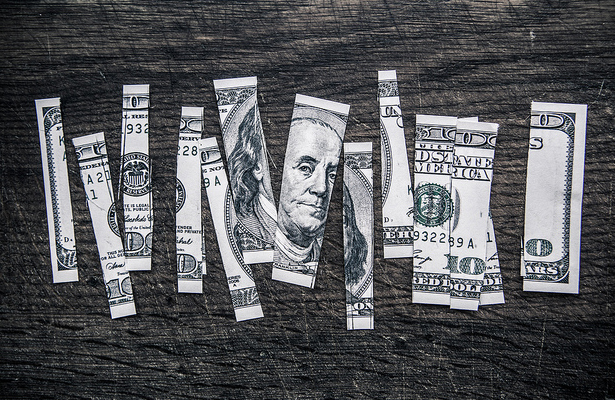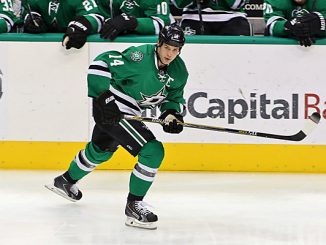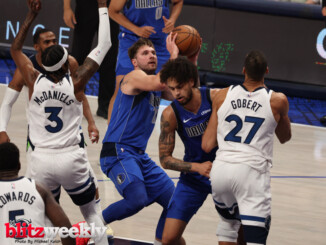
Photo courtesy: Taxcredits.net
In 2012, NFL players doled out a total of $2.87 million in fines, the highest mark in the past decade. According to Justfines.com, a website that tracks this data, league-wide fines are increasing in both frequency and severity. The complaints against Roger Goodell were spearheaded by Ray Lewis. The majority of the players fined by Goodell are black. Players felt that he swept white players drinking and driving convictions, failed drug tests, and other moral misconducts under the rug while black players made front page news.
Goodellian economics
Take last year for example, the NFL levied 160 fines on its players, with the highest being a $55,000 penalty on then Baltimore Ravens safety Ed Reed for a shoulder-to-head hit on the New York Giants’ Victor Cruz. Compare these numbers with those reported in the five-year span between 2001 and 2005. During this period, the league issued a total of 124 fines, averaging about $700,000 annually. Why is this time frame important? Because Roger Goodell became the NFL’s new commissioner at the beginning of the 2006 season. Since Goodellian economics (that’s what I’m calling it) became the law of the NFL, the number of fines given each year has increased by more than 600%, and the average value of each fine has risen by about 20%. The largest ever fine for an on-field incident was given last season when Detroit Lions tackle Ndamukong Suh was forced to pay $100,000 for an illegal block.
Where does the money go?
The question you’re probably asking is… Where does the money go? If repeat offenders Mike Mitchell, a safety with the Carolina Panthers, is to be believed, NFL fine money goes “right in Roger [Goodell]’s pocket.” Obviously, that wouldn’t fly with the NFL Players Association. In the face of similar criticism a few years ago, the league released a communiqué that revealed the following information (emphasis mine):
All on-field fine money collected by the NFL is used for charitable purposes. These funds have been used to support retired player programs, including the NFL Player Care Foundation [P.C.F.] and NFLPA Players Assistance Trust [P.A.T.]; disaster relief initiatives; and health-related charities.
While there’s no comprehensive list of the charities that accept fine money aside from the P.C.F. and the P.A.T. (which takes in at least 25% of all fines each year), it has been reported that the Partnership for Clean Competition, the Brian Piccolo Memorial Fund, and the Lombardi Comprehensive Cancer Center are regular recipients. It is intriguing to see that everything from anti-doping to cancer research is supported by NFL on-field antics, and it’s also important to understand that P.A.T. grants are given to an extensive list of charities in their own right.
Mixed opinions
As you’d expect, opinions are mixed on the increased usage of fines by the NFL. In theory, the aim of Goodellian economics is to increase player safety. Goodell has stressed time and time again that one of his primary goals as NFL commissioner is to cut down on injuries that affect players’ lives post-football. Between 2011 and the end of the 2012 season, the number of leaguewide concussions dropped by 40%, and at the end of last season, reported head injuries are down year after year. It appears that Goodell’s quest to improve the health of the NFL is working. But that doesn’t mean everyone is on board. Former Ravens linebacker Ray Lewis has expressed his concerns before, asserting that the game is too fast to expect players to avoid dangerous tackles 100% of the time. Fellow Raven Jameel McClain has likened the current direction of the NFL to “flag football,” adding that any further loss in physicality may lead fans to stop watching. In fact, Goodell holds just a 39% player-approval rating, according to a recent USA Today poll, so it appears many players share a similar sentiment.
The Money is Flowing In
The assertion that the NFL is reliant on high-impact collisions is a noble one, but ultimately unsupported by the numbers. Since 2006 when Goodell took office, league revenue has increased from $6 billion to $9.5 billion. Although exact data isn’t reported, the SportsBusiness Journal estimates that TV rights deals and online licensing are two areas most responsible for this expansion.
With player safety efforts and aggregate revenues on the rise, Goodell has stated that he wants to hit the $25 billion mark by 2027. This implies he’s seeking slightly quicker annual revenue growth (10.9%) than the league has averaged since he became commissioner (8.3%). As Forbes recently pointed out, fantasy sports and mobile streaming are a couple X-factors that can help the NFL reach this target.
A Kinder, Gentler Goodell?
Roger Goodell is the judge and jury in NFL disciplinary cases, but his track record on appealed suspensions is a promising sign for Tom Brady. Facing a four game ban to start the 2015 season, Brady plans to appeal his sentence and has until Thursday at 5 p.m. to formally file the paperwork to appeal.
Since 2010, on Goodell’s watch, two indefinite suspensions have been overruled, a pair of one-game bans have been eliminated, two multi-game suspensions have been reduced, and all the players disciplined in the Bountygate scandal were able to overturn their suspensions.
It all started with Pittsburgh Steelers quarterback Ben Roethlisberger, suspended for six games in 2010 after being accused of sexual assault. Roethlisberger was never charged in the case, and Goodell reduced his suspension to four games.
The Bountygate scandal involving the New Orleans Saints led to suspensions for four defensive players. Goodell suspended linebacker Jonathan Vilma for the entire 2012 season, defensive ends Anthony Hargrove and Will Smith for eight and four games, respectively, and linebacker Scott Fujita for three games. Goodell hired his predecessor, former NFL commissioner Paul Tagliabue, to handle the player appeals, and Tagliabue overturned all the suspensions.
The 2013 season saw the NFL get tougher on helmet-to-helmet hits, but Goodell’s strict suspensions didn’t always hold up. Buccaneers safety Dashon Goldson had a one game suspension appealed down to a $100,000 fine, and Brandon Meriweather had his two game ban (as a repeat offender) reduced to one game on appeal in October.
Goodell came under fire throughout the 2014 season after a woefully lenient two game ban was imposed on Ray Rice for abusing his then-fiance. Goodell admitted his mistake and suspended Rice indefinitely, but an independent arbiter ruled in Rice’s favor in November, overturning the indefinite suspension. Rice was reinstated, but has not received much interest from NFL teams.
Adrian Peterson was also suspended indefinitely by Goodell for an off field incident in 2014, and his case, too, was overruled in court, leading to his reinstatement in April. Additionally, Detroit Lions star Ndamukong Suh was set to be suspended for his team’s Wild Card round playoff game for stepping on the ankle of Packers quarterback Aaron Rodgers in Week 17, but that suspension was appealed down to a $70,000 fine.
Soon to be on his docket will sit the appeals of Greg Hardy (10 games) and Tom Brady (4 games). Which version of Roger Goodell will we see? Draconian or Paternal? Time will tell.




